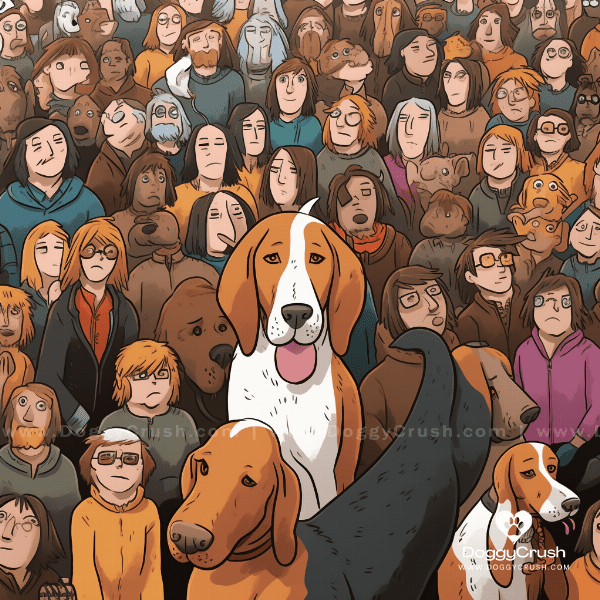Table of Contents
- Introduction to the Bloodhound Dog Breed
- History of the Bloodhound Dog
- Unique Physical Characteristics of the Bloodhound Dog
- The Bloodhound’s Incredible Sense of Smell
- Training the Bloodhound for Search and Rescue
- Common Health Issues in Bloodhound Dogs
- Bloodhound Dog as a Family Pet
- Famous Bloodhound Dogs in Pop Culture
- Caring for Your Bloodhound Dog
- Conclusion: Why the Bloodhound is a Truly Fascinating Breed
Introduction to the Bloodhound Dog Breed
Bloodhound dogs are known for their impressive tracking abilities and are often used for search and rescue missions. They are a large breed, weighing between 80-110 pounds and standing 23-27 inches tall at the shoulder. Bloodhounds are a member of the hound group and have been bred for centuries for their incredible sense of smell.
Origin of the Bloodhound Breed
The bloodhound breed has been around for hundreds of years, with their earliest origins dating back to medieval Europe. They were originally bred for hunting and were often used to track deer and other large game. As the breed evolved, they became increasingly useful for tracking humans, leading to their widespread use by law enforcement and search and rescue teams.
Characteristics of Bloodhound Dogs
Bloodhounds are known for their wrinkled faces and long, droopy ears. Their fur is short and typically comes in shades of black and tan, liver and tan, or red. They have a powerful build and are well-suited for tracking over long distances. Bloodhounds are also known for their gentle and loyal nature, making them excellent family pets.
Bloodhound’s Sense of Smell
One of the most notable characteristics of the bloodhound is their incredible sense of smell. They have over 300 million scent receptors, making them one of the most adept scent-tracking dogs in the world. This unique ability has made them invaluable in search and rescue missions, as they are able to track missing persons for miles through a variety of terrains.
Popularity of Bloodhound Dogs
Despite their impressive abilities and lovable nature, bloodhounds are not as common as some other breeds. This is largely due to their size and need for ample exercise and training. However, those who do choose to adopt a bloodhound are often lifelong fans of the breed, noting their loyalty and intelligence as standout traits.
Overall, bloodhound dogs are a truly fascinating breed, with a rich history and unique set of characteristics. From their powerful build to their unmatched sense of smell, these dogs are truly one-of-a-kind and continue to make an impact in the world today.
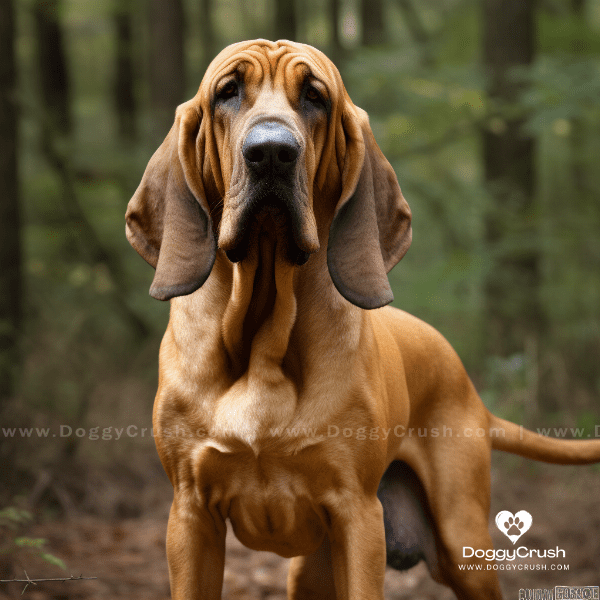
History of the Bloodhound Dog
The history of the bloodhound breed can be traced back to ancient times, with evidence of similar dogs being used in ancient Egypt and Greece. However, the bloodhound as we know it today has its roots in medieval Europe, where they were originally bred for hunting.
Early Uses of Bloodhounds
Bloodhounds were initially used for hunting large game, such as deer and wild boar. They were prized for their incredible sense of smell, which allowed them to track game over long distances. Over time, their abilities were recognized by law enforcement and search and rescue teams, and they became increasingly used for tracking humans.
Bloodhounds in Law Enforcement
Bloodhounds have been used by law enforcement agencies for centuries to track down criminals and missing persons. They were particularly popular in the 19th century, when they were used to track escaped slaves in the United States. Today, bloodhounds continue to be used in law enforcement, and are often employed in missing person cases.
Famous Bloodhounds in History
Throughout history, bloodhounds have played a prominent role in many notable events. Perhaps the most famous bloodhound in history is the dog named Nick Carter, who helped track down the notorious outlaw Jesse James in 1876. Other notable bloodhounds include Judge, who was instrumental in the capture of the notorious criminal John Wilkes Booth, and Caesar, who was used in the search for the Boston Strangler in the 1960s.
Evolution of the Bloodhound Breed
Over time, the bloodhound breed has evolved to become more specialized in tracking humans. Their incredible sense of smell has been honed through selective breeding, making them one of the most adept tracking dogs in the world. However, this specialization has come at a cost, as bloodhounds are now more prone to certain health issues, such as hip dysplasia and bloat.
Despite their specialized use in law enforcement and search and rescue, bloodhounds continue to be beloved pets for those who appreciate their loyal and gentle nature. Their unique history and role in human society make them a fascinating breed, and one that is sure to continue making an impact for many years to come.

Unique Physical Characteristics of the Bloodhound Dog
Bloodhounds are a breed of dog with distinct physical features that make them easily recognizable. From their wrinkled faces to their long, droopy ears, these dogs have a number of unique physical characteristics that set them apart from other breeds.
Wrinkled Skin
One of the most noticeable features of the bloodhound is their wrinkled skin, particularly on their faces. This is due to the loose skin that covers their bodies, which allows them to track scents without getting caught on bushes or other obstacles. However, their wrinkled skin requires extra care to prevent infections and other skin problems.
Droopy Ears
Bloodhounds are also known for their long, droopy ears, which help to trap scents and direct them towards their powerful noses. These ears can also make them more susceptible to ear infections and other ear-related health issues.
Large Size
Bloodhounds are a large breed of dog, weighing between 80-110 pounds and standing 23-27 inches tall at the shoulder. Their size can make them intimidating to some people, but their gentle nature and loyalty make them excellent family pets.
Powerful Build
Bloodhounds have a powerful build that allows them to cover long distances while tracking scents. Their bodies are well-suited to running and jumping, and they have a strong sense of stamina that makes them ideal for search and rescue missions.
Unique Coat Colors
Bloodhounds come in a variety of coat colors, including black and tan, liver and tan, and red. Their short, smooth fur is easy to maintain, but they do shed quite a bit and may require regular brushing to keep their coats looking healthy.
Overall, the unique physical characteristics of the bloodhound make them a fascinating breed with a distinct appearance. From their wrinkled skin to their droopy ears, these dogs are instantly recognizable and beloved by many for their loyal and gentle nature.
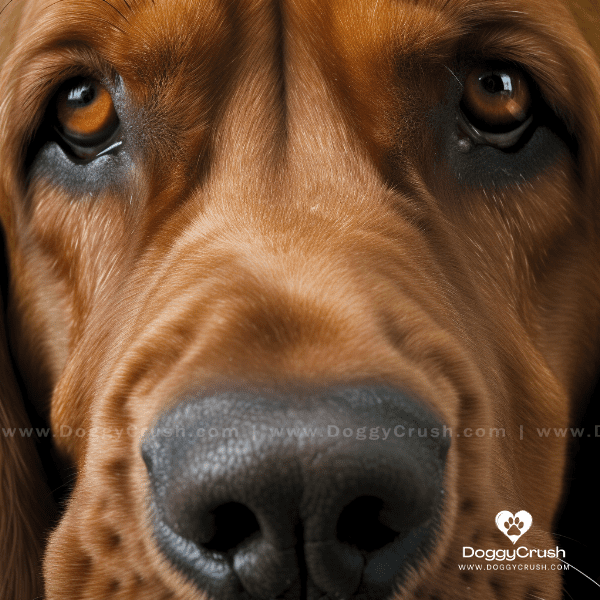
The Bloodhound’s Incredible Sense of Smell
The bloodhound is widely regarded as one of the most adept scent-tracking dogs in the world. Their sense of smell is so powerful that they have been used for centuries by law enforcement and search and rescue teams to track down criminals and missing persons.
Unique Olfactory System
The bloodhound’s incredible sense of smell is due to their unique olfactory system. They have over 300 million scent receptors, which is significantly more than most other Dog breeds. Additionally, their large nostrils and long snouts allow them to inhale and process scents more effectively.
Scent-Tracking Abilities
Bloodhounds are known for their impressive scent-tracking abilities, which are unmatched by most other dogs. They are able to track scents over long distances and through a variety of terrains, including water and thick brush. This ability has made them invaluable in search and rescue missions, where they are often used to track missing persons.
Training for Scent-Tracking
While bloodhounds have a natural ability to track scents, they still require extensive training to be able to do so effectively. This training involves exposing them to a wide range of scents and teaching them to distinguish between different smells. Bloodhounds are often used in scent-tracking competitions, where they are judged on their ability to track scents accurately and quickly.
Health Issues Related to Sense of Smell
While the bloodhound’s sense of smell is undoubtedly impressive, it can also lead to certain health issues. Bloodhounds are prone to developing respiratory problems, such as asthma and allergies, due to their sensitive noses. Additionally, their long ears can trap scents and lead to ear infections and other related issues.
Overall, the bloodhound’s incredible sense of smell is one of their most fascinating and notable traits. Their unique olfactory system and scent-tracking abilities make them invaluable in law enforcement and search and rescue, and their gentle nature and loyalty make them excellent family pets.
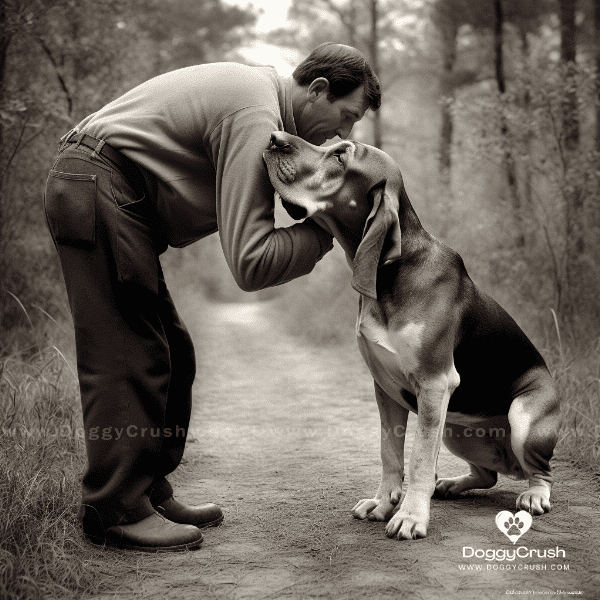
Training the Bloodhound for Search and Rescue
Bloodhounds are renowned for their impressive scent-tracking abilities, which make them a valuable asset in search and rescue missions. However, these abilities don’t come naturally, and bloodhounds must be trained extensively in order to be effective search and rescue dogs.
Basic Training
The first step in training a bloodhound for search and rescue is to establish a strong foundation of basic training. This includes obedience training, as well as socialization and exposure to a wide range of environments and situations. A bloodhound that is well-trained in basic obedience is more likely to be focused and responsive when it comes time to track scents.
Scent-Tracking Training
Once a bloodhound has a solid foundation of basic training, they can begin to be trained in scent-tracking specifically. This training involves exposing the dog to a wide range of scents and teaching them to distinguish between different smells. Handlers will often use a variety of tools and techniques, such as scent cones and scent trails, to help the dog learn how to track scents effectively.
Search and Rescue Training
The final step in training a bloodhound for search and rescue is to teach them how to work in a search and rescue environment. This involves exposing them to simulated search and rescue scenarios and teaching them how to work with a handler to track scents and locate missing persons. Bloodhounds are often trained in teams with other dogs and handlers, which helps to build their social skills and teamwork abilities.
Continual Training and Practice
Training a bloodhound for search and rescue is an ongoing process, and requires continual training and practice. Bloodhounds must be exposed to a wide range of scents on a regular basis in order to maintain their tracking abilities. Handlers must also be trained to work effectively with their dogs and to interpret their behaviors and signals.
Overall, training a bloodhound for search and rescue is a challenging but rewarding process. These dogs have the ability to make a real difference in people’s lives, and their incredible scent-tracking abilities make them an invaluable asset in search and rescue missions.

Common Health Issues in Bloodhound Dogs
While bloodhounds are generally healthy dogs, they are prone to certain health issues due to their size and unique physical characteristics. It’s important for potential bloodhound owners to be aware of these health issues so that they can provide the best care possible for their pets.
Hip Dysplasia
Hip dysplasia is a common health issue in many large breeds, including bloodhounds. It is a genetic condition in which the hip joint doesn’t develop properly, leading to pain and mobility issues. Bloodhounds with hip dysplasia may experience difficulty walking, running, and climbing stairs. While there is no cure for hip dysplasia, it can be managed with medication and surgery in severe cases.
Bloat
Bloat, or gastric torsion, is a serious condition that can affect bloodhounds. It occurs when the stomach fills with gas or fluid and twists, cutting off blood flow to the stomach and other organs. Bloat can be fatal if left untreated, so it’s important for bloodhound owners to be aware of the symptoms, which include restlessness, bloating of the stomach, and difficulty breathing.
Ear Infections
Bloodhounds are prone to developing ear infections due to their long, droopy ears. These ears can trap moisture and debris, leading to bacterial or fungal infections. Symptoms of an ear infection in a bloodhound include scratching at the ears, shaking the head, and discharge from the ears. Ear infections can be treated with medication, but prevention is key. Bloodhound owners should clean their dog’s ears regularly and keep them dry.
Skin Infections
Bloodhounds are also prone to developing skin infections due to their wrinkled skin. These infections can be caused by bacteria, fungi, or parasites and can lead to itching, redness, and inflammation. Bloodhound owners should be aware of the signs of a skin infection and seek treatment promptly. Prevention involves keeping the dog’s skin clean and dry and addressing any skin issues promptly.
Overall, while bloodhounds are generally healthy dogs, they are prone to certain health issues that owners should be aware of. With proper care and attention, bloodhounds can live long and happy lives.
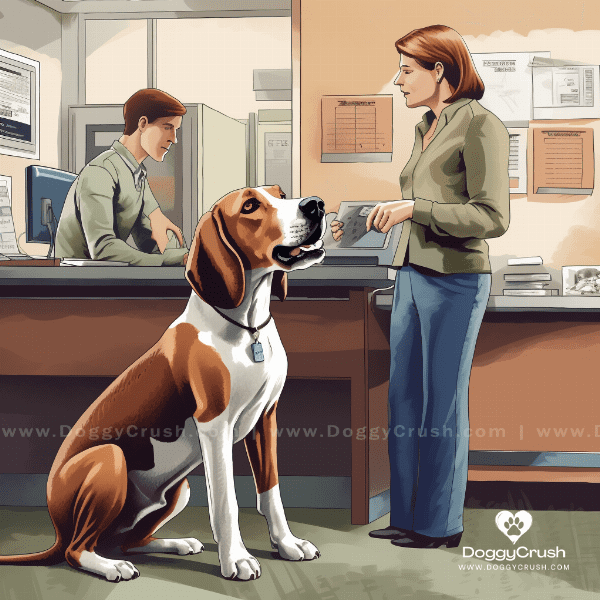
Bloodhound Dog as a Family Pet
Bloodhounds may be known for their impressive scent-tracking abilities, but they can also make wonderful family pets. Their gentle nature and loyalty make them excellent companions for families of all sizes.
Loyal and Loving
One of the standout traits of the bloodhound is their loyalty and affection towards their owners. They are known for being gentle and loving dogs that enjoy spending time with their families. Bloodhounds are also very protective of their loved ones, making them excellent watchdogs.
Good with Children
Despite their large size, bloodhounds are generally good with children. They are patient and tolerant of little ones, and can make excellent playmates for kids. However, due to their size and strength, it’s important to supervise interactions between bloodhounds and children to ensure everyone’s safety.
Exercise and Training Needs
Bloodhounds are an active breed that require regular exercise and training to keep them healthy and happy. They need plenty of space to run and play, as well as regular training sessions to keep their minds stimulated. Bloodhounds also require frequent socialization to ensure that they are well-behaved around other dogs and people.
Grooming Needs
Bloodhounds have a short, smooth coat that is relatively easy to maintain. However, their wrinkled skin requires regular cleaning to prevent infections and other skin problems. Their long, droopy ears also require extra attention to prevent ear infections.
Health Considerations
As with any breed, bloodhounds are prone to certain health issues. It’s important for potential bloodhound owners to be aware of these health issues and to provide their dogs with regular veterinary care. Proper care and attention can help to prevent or manage many of these health issues.
Overall, bloodhounds can make wonderful family pets for those who are willing to provide them with the care and attention they need. Their loyal and affectionate nature, combined with their unique physical characteristics, make them a fascinating and beloved breed.
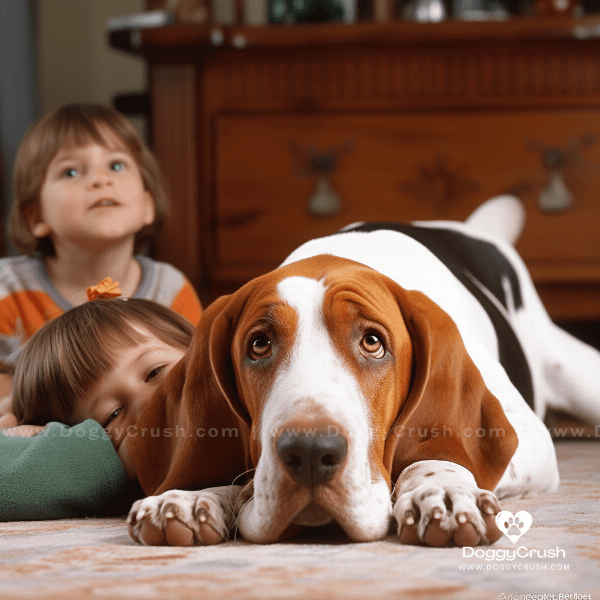
Famous Bloodhound Dogs in Pop Culture
Bloodhounds have played a prominent role in pop culture for many years, appearing in a variety of movies, TV shows, and books. Here are some of the most famous bloodhound dogs in pop culture.
Copper from “The Fox and the Hound”
One of the most famous bloodhound dogs in pop culture is Copper, from the classic Disney movie “The Fox and the Hound.” Copper is a loyal companion to his owner, a young boy named Tod, and helps him track down the titular fox. Copper’s friendly personality and loyalty have made him a beloved character for generations of fans.
Hooch from “Turner and Hooch”
Another famous bloodhound in pop culture is Hooch, from the 1989 movie “Turner and Hooch.” Hooch is a slobbery, lovable bloodhound who helps Detective Scott Turner (played by Tom Hanks) solve a crime. Hooch’s antics and affectionate personality have made him a fan favorite.
Snoopy’s Cousin Spike
Snoopy, the beloved beagle from the Peanuts comic strip, has a cousin named Spike who is a bloodhound. Spike is known for his laid-back personality and his love of sleeping in a hammock. Despite his laziness, Spike is always willing to help out his cousin Snoopy when he needs it.
McGruff the Crime Dog
McGruff the Crime Dog is a bloodhound who was created in the 1980s as a mascot for the National Crime Prevention Council. McGruff appeared in a series of public service announcements, encouraging children to “Take a Bite Out of Crime.” McGruff’s distinctive trench coat and fedora have made him an instantly recognizable figure in pop culture.
Tinker from “The Great Mouse Detective”
Tinker is a bloodhound who appears in the Disney movie “The Great Mouse Detective.” Tinker helps the mouse detective Basil of Baker Street track down the villainous Professor Ratigan. Tinker’s impressive scent-tracking abilities and loyal personality make him a valuable asset to Basil’s team.
Overall, bloodhounds have played a variety of memorable roles in pop culture over the years. From lovable companions to crime-fighting heroes, bloodhounds have captured the hearts of fans around the world.
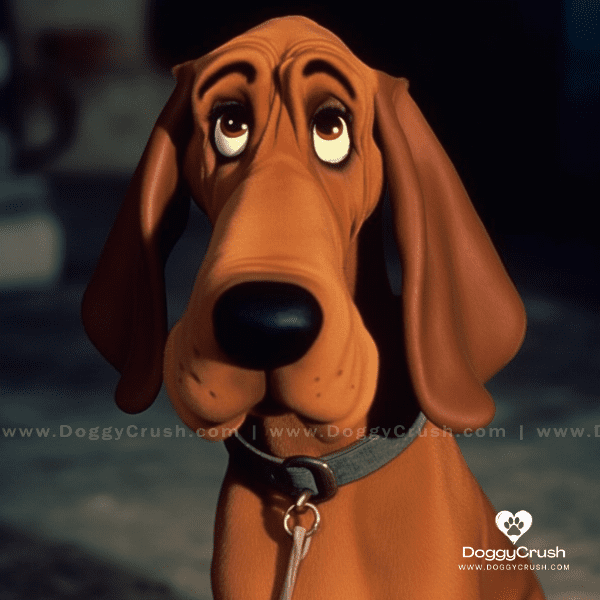
Caring for Your Bloodhound Dog
Caring for a bloodhound requires some specific knowledge and attention to detail. Here are some tips for caring for your bloodhound:
Diet and Nutrition
Bloodhounds have specific dietary requirements due to their large size and unique physical characteristics. They require a high-quality dog food that is rich in protein, vitamins, and minerals. Bloodhounds should also be fed on a regular schedule to prevent digestive issues.
Exercise and Playtime
Bloodhounds are an active breed that require plenty of exercise and playtime to keep them healthy and happy. They need plenty of space to run and play, and should be taken for regular walks and outdoor activities. Bloodhounds also enjoy mental stimulation, such as puzzle toys and training sessions.
Grooming and Hygiene
Bloodhounds require regular grooming and hygiene to maintain their health and well-being. Their wrinkles should be cleaned regularly to prevent infections, and their ears should be cleaned and checked for signs of infection. Bloodhounds also require regular nail trimming and tooth brushing to keep them healthy and comfortable.
Veterinary Care
Regular veterinary care is essential for maintaining the health of your bloodhound. They should receive regular check-ups, vaccinations, and preventative care, such as flea and tick prevention. Bloodhounds are prone to certain health issues, so it’s important to monitor them closely for any signs of illness or discomfort.
Training and Socialization
Bloodhounds require regular training and socialization to ensure that they are well-behaved and well-adjusted around other dogs and people. They should be exposed to a wide range of environments and situations, and taught basic obedience and manners. Bloodhounds also benefit from regular socialization with other dogs and people.
Overall, caring for a bloodhound requires knowledge, attention to detail, and a commitment to their health and well-being. With proper care and attention, bloodhounds can make wonderful companions for families and individuals alike.
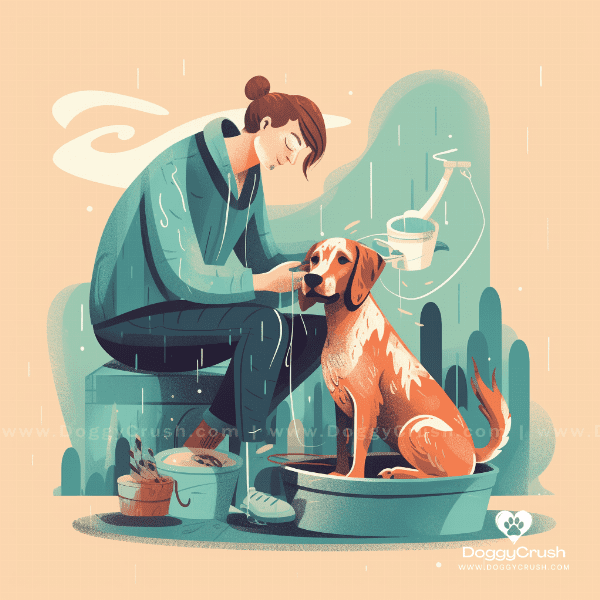
Conclusion: Why the Bloodhound is a Truly Fascinating Breed
The bloodhound is a truly unique and fascinating breed that has captured the hearts of dog lovers around the world. From their impressive scent-tracking abilities to their gentle and loyal personalities, bloodhounds have much to offer as companions and working dogs.
A Rich History
Bloodhounds have a long and storied history, dating back centuries. They were originally bred as hunting dogs, and their unique scent-tracking abilities made them valuable assets to hunters and law enforcement agencies alike.
Impressive Physical Characteristics
Bloodhounds are known for their distinctive physical characteristics, including their droopy ears, wrinkled skin, and large size. These characteristics give them a unique appearance and make them easily recognizable.
Loyal and Loving Personalities
Despite their large size and impressive abilities, bloodhounds are gentle, loyal, and loving dogs. They make excellent family pets and are known for their patience and affection towards children.
Valuable Working Dogs
Bloodhounds are also valuable working dogs, particularly in the fields of search and rescue and law enforcement. Their incredible scent-tracking abilities make them invaluable assets in these fields, and they have helped to save countless lives over the years.
In conclusion, the bloodhound is a truly fascinating breed that has much to offer as both a companion and a working dog. From their rich history to their impressive physical characteristics and loyal personalities, bloodhounds are truly one-of-a-kind. Whether you’re a dog lover or a working professional, the bloodhound is a breed that deserves your attention and admiration.
